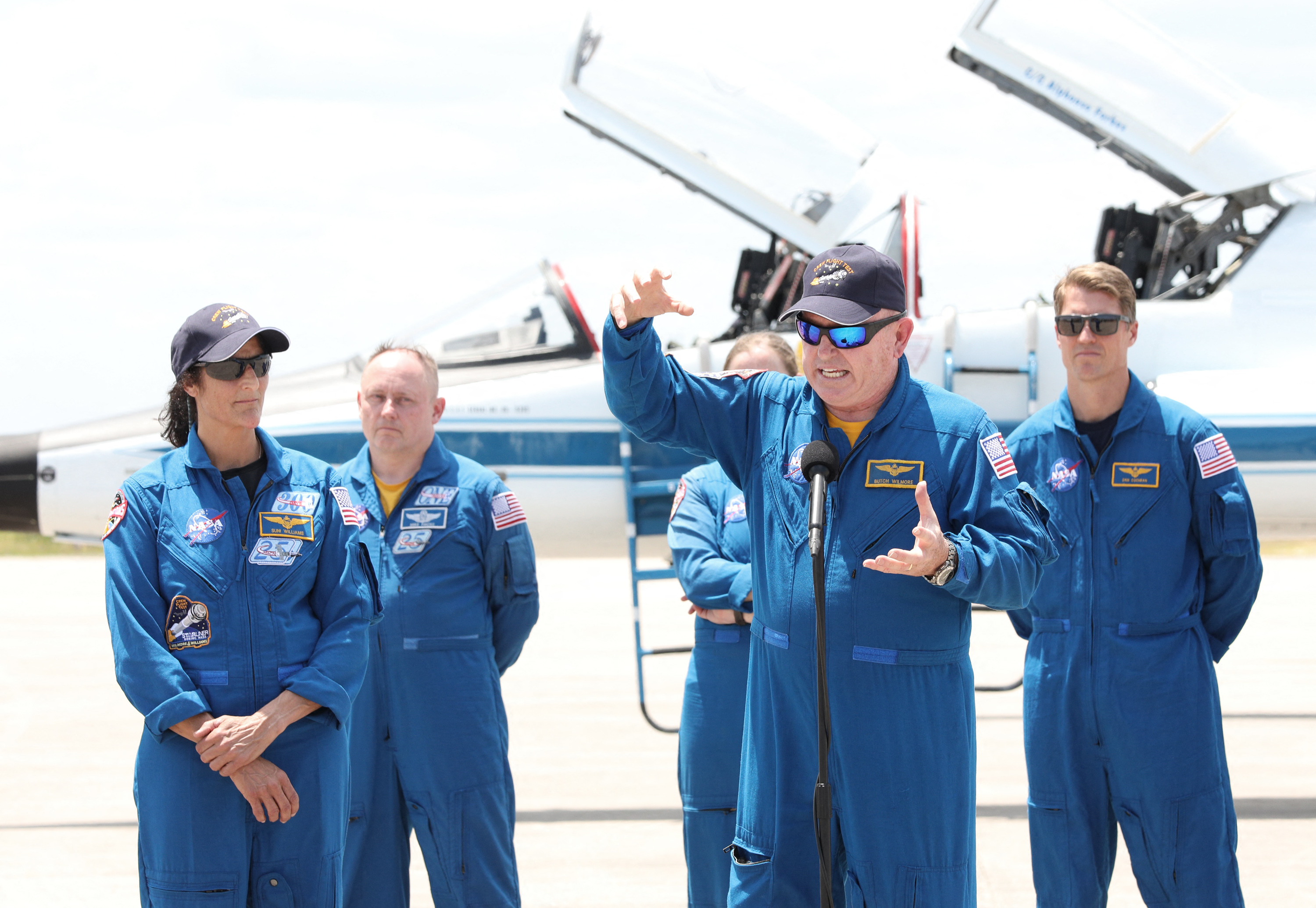A huge asteroid that may measure up to 460 feet in diameter is set to soar near the Earth on Thursday.
The asteroid, named 2015 RN35, will pass our planet at a distance of about 426,000 miles and will be traveling at speeds of 5.91 kilometers per second, or around 13,220 miles per hour, as shown by close approach data from NASA's Near Earth Observatory.
While this may sound exceptionally far away, in astronomical terms the asteroid is coming fairly closer to Earth. The moon orbits us at a distance of 238,900 miles, while our nearest planetary neighbor, Venus, is currently 153.6 million miles away from Earth.
Most asteroids range in diameter from around 30 feet to up to hundreds of miles. The largest asteroid in our solar system is Ceres, which has a diameter of 587.82 miles. According to estimates, 2015 RN35 is between 206 and 460 feet across, which makes it roughly the same size as a baseball field.

"Asteroids are "bits of a planet that didn't happen," that orbit the sun between Mars and Jupiter in the main asteroid belt. However, as they are relatively small, asteroids can be disturbed quite easily, so they can develop orbits that cross those of planets," Jay Tate, the director of the U.K.'s Spaceguard Center observatory, previously told Newsweek.
NASA data shows that 2015 RN35 orbits the sun roughly once every 1.8 Earth years.
NASA estimates that around 1.1 million asteroids are in our solar system, many of which occupy the asteroid belt between Mars and Jupiter.

Asteroids that veer toward the Earth's orbit may have been ejected as a result of impacts in the asteroid belt or influenced by gravitation interactions with other large celestial bodies, like Jupiter. Many of these are classified as near-Earth objects because of their proximity to our planet. There are 30,000 NEOs and counting. Of these, some are in another subset called "potentially hazardous" objects, meaning they come within 4.6 million miles of Earth's orbit and also measure greater than 460 feet in diameter.
"The potentially hazardous designation simply means over many centuries and millennia the asteroid's orbit may evolve into one that has a chance of impacting Earth. We do not assess these long-term, many-century possibilities of impact," Paul Chodas, manager of NASA's Center for Near-Earth Object Studies, previously told Newsweek.
Despite 2015 RN35's proximity to the Earth, the chances of this asteroid or others hitting our planet are very small.
However, if an asteroid the same size as 205 RN35 did one day collide with the Earth, the results would be catastrophic.
An asteroid 330 to 650 feet in diameter "would cause a regional disaster, taking out a small country, but with the resulting global consequences in terms of the global economy and globalization," Tate said previously.
The destruction caused by an asteroid impact, based on size, speed and impact angle, can be simulated using an online tool called the Asteroid Launcher. It was designed by web game developer Neal Agarwal and based on research conducted by Gareth Collins, a professor of planetary science at Imperial College London, and aerospace engineer and asteroid impact risk expert Clemens Rumpf.
Just used that excellent new simulator to show what would happen if a 500m diameter asteroid, traveling at 17 km/s and entering at 45° impacted the city of Sydney …. And, err, things are not good ….
— Rami Mandow 🏳️🌈 (@CosmicRami) December 8, 2022
[alt-text: satellite view of Sydney showing different effects of impact] pic.twitter.com/NjGPRUoe1L
Newsweek previously ran a simulation of an iron asteroid, with a 0.62-mile diameter, hitting central New York City at 38,000 miles per hour and at a 45-degree angle. The simulation showed that this asteroid impact would have effects similar to the detonation of 100 gigatons of TNT. This amount of energy could power the entire world for a whole year.
Do you have a tip on a science story that Newsweek should be covering? Do you have a question about asteroids? Let us know via science@newsweek.com.
Uncommon Knowledge
Newsweek is committed to challenging conventional wisdom and finding connections in the search for common ground.
Newsweek is committed to challenging conventional wisdom and finding connections in the search for common ground.
About the writer
Jess Thomson is a Newsweek Science Reporter based in London UK. Her focus is reporting on science, technology and healthcare. ... Read more
To read how Newsweek uses AI as a newsroom tool, Click here.





